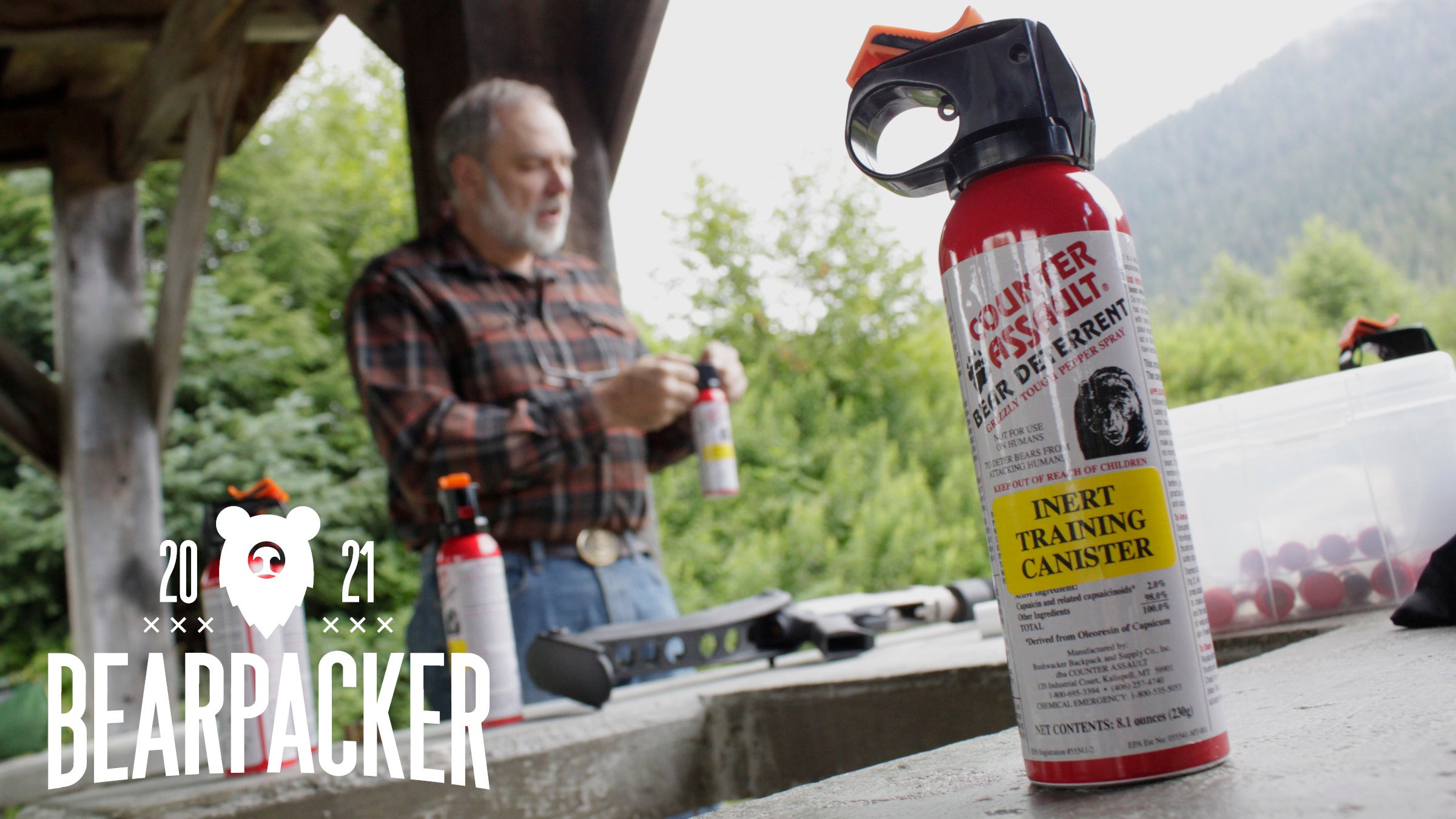Pro Tip: Bear Spray Goes on the Bear, Not on You

Former Alaska Department of Fish and Game biologist John Hechtel examines a can of inert bear spray during a training session focusing on bear deterrents Thursday, July 24, 2014 in Wrangell, Alaska. The session was part of the fifth annual Wrangell Bearfest celebration. (James Brooks photo) (Photo: James Brooks)
The customer who showed up at the sporting goods store was furious, and demanded to speak with a manager. When one arrived, he handed her a canister of bear spray and told her that she had sold him a “defective” product, and that it had sent his wife to the hospital when they tried to use it. The bear spray, he said, should never have been allowed on store shelves.
“I asked, well, how did it cause your wife to go to the hospital?” said the manager, who spoke on condition of anonymity because her employer had not authorized her to talk to the media. “And he said ‘I was 15 feet away, and I sprayed my wife with this bear repellent, and it burned her.’” The man, it turned out, mistakenly believed that bear spray worked like bug spray and applied the high-test pepper solution to his wife’s skin, hair, and eyes.
It’s a mistake that’s so absurd, it would almost be funny—if it didn’t keep happening. Each year, Backpacker hears anecdotes about hikers who aren’t used to traveling in grizzly country spraying their tents and backpacks with bear spray, believing that it will repel hungry or curious bruins. A smaller number use it on themselves, with disastrous results.
When researchers from the University of Montana developed pepper-based bear spray in the 1980s, hikers gained a method of protecting themselves from run-ins with grizzlies that was less lethal, more reliable, and easier to deploy under pressure than firearms. Studies have since found that hikers who defend themselves with it escape injury in a majority of cases, which has made it a must-have for visitors to bear country.
But just because bear spray is widely available doesn’t mean that the people buying it bother to learn how to use it. While instructional videos are easily available online and canisters carry bold-type warnings that the products aren’t for use on humans, people still mess up. The most common mistake is to spray it on tents or other gear, assuming that the smell is meant to keep bears away. Unfortunately, as people who misuse bear spray this way discover, it doesn’t work. Sometimes, it can even attract bears: It’s not unheard of for backpackers to wake up to a bruin licking the residue off of their tent.
People who apply bear spray to themselves are in for an even worse surprise. Bear spray is potent, with up to three times the capsaicinoids—the chili-pepper-derived chemicals that cause its burning sensation—of pepper spray meant to defend against humans or dogs. What’s more, it comes out like a fire extinguisher; it’s meant to deter a charging griz at a distance of 30 feet instead of the 8-12 feet of a human pepper spray. Get it on yourself, and you can expect to experience pain and swelling of the mucous membranes in your eyes, mouth, and nose, as well as difficulty breathing, for up to a half-hour.
The obvious lesson? While this stuff may not permanently harm a bear, you don’t want it on you—or your significant other.
As for the sporting goods store return, the manager’s attempts to point out the picture of a person using the spray against a bear, and not on, for example, his wife, fell flat. The irate customer, an international tourist whose first language wasn’t English, wasn’t getting the message, and the store ended up giving him his money back.